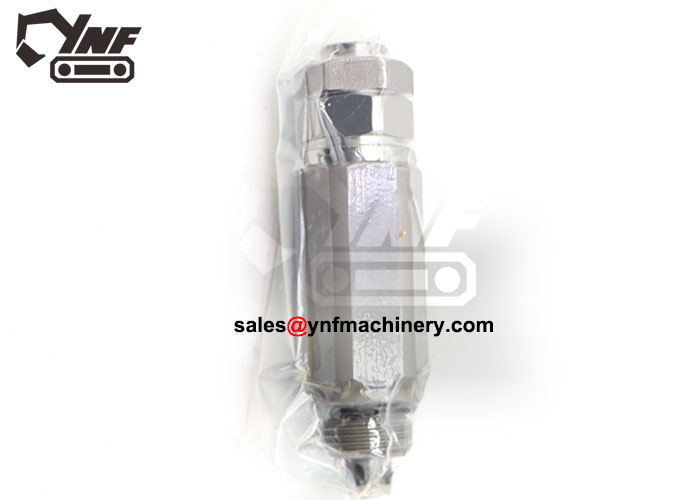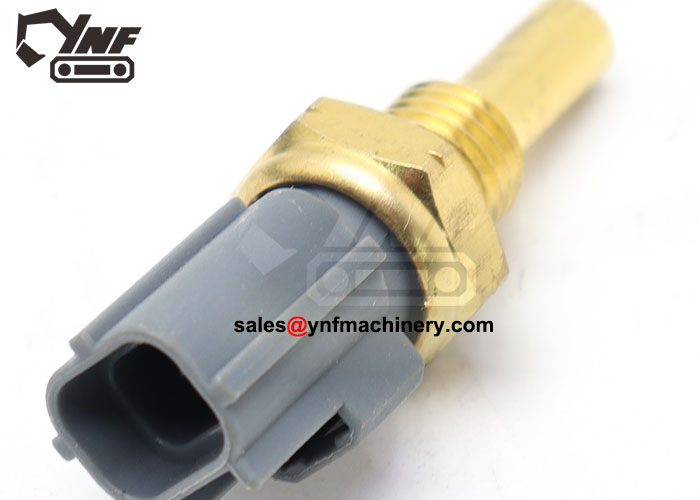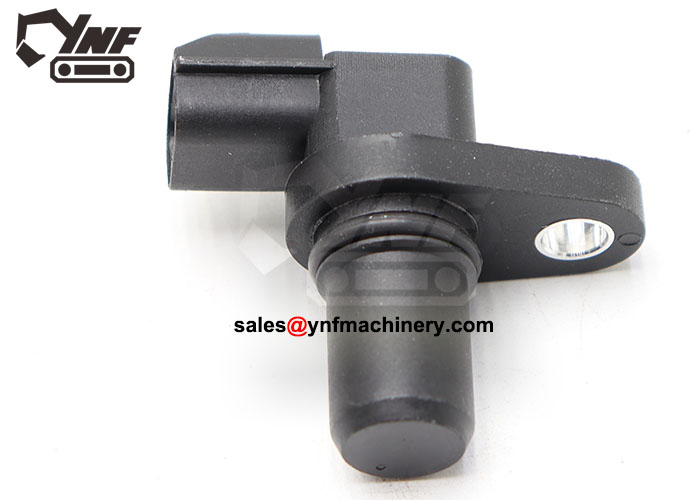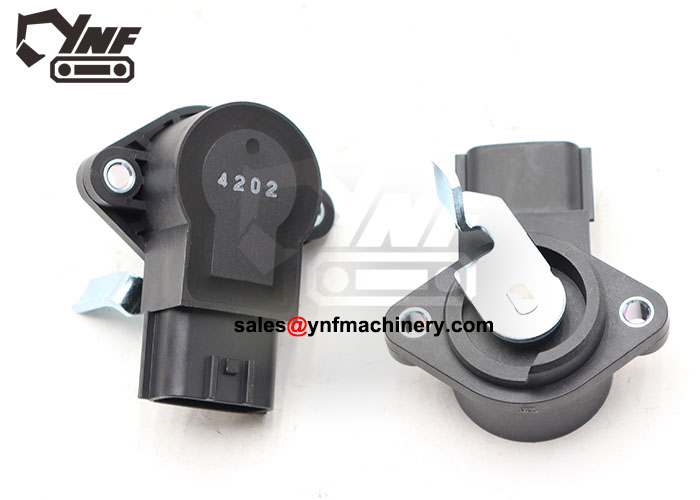
Maintaining your Kubota mini excavator can feel overwhelming, especially when you’re unsure about the exact parts you need. That’s where a kubota mini excavator parts diagram becomes your best friend. It helps you pinpoint the right components quickly, saving time and avoiding costly mistakes. To make things even easier, YNF Machinery offers top-notch parts like excavator couplings, engine parts, and hydraulic cylinder seal kits. These high-quality products ensure your machine stays in peak condition, reducing downtime and boosting efficiency. With the right tools and resources, keeping your excavator running smoothly has never been simpler.
Key Takeaways
Use Kubota mini excavator diagrams to find parts for repairs.
Learn the symbols in diagrams to avoid mistakes and confusion.
Get your tools and the right diagram for your model first.
Practice using diagrams often to get better at finding parts.
Check for new updates from Kubota and YNF Machinery for correct info.
Understanding Kubota Mini Excavator Parts Diagrams
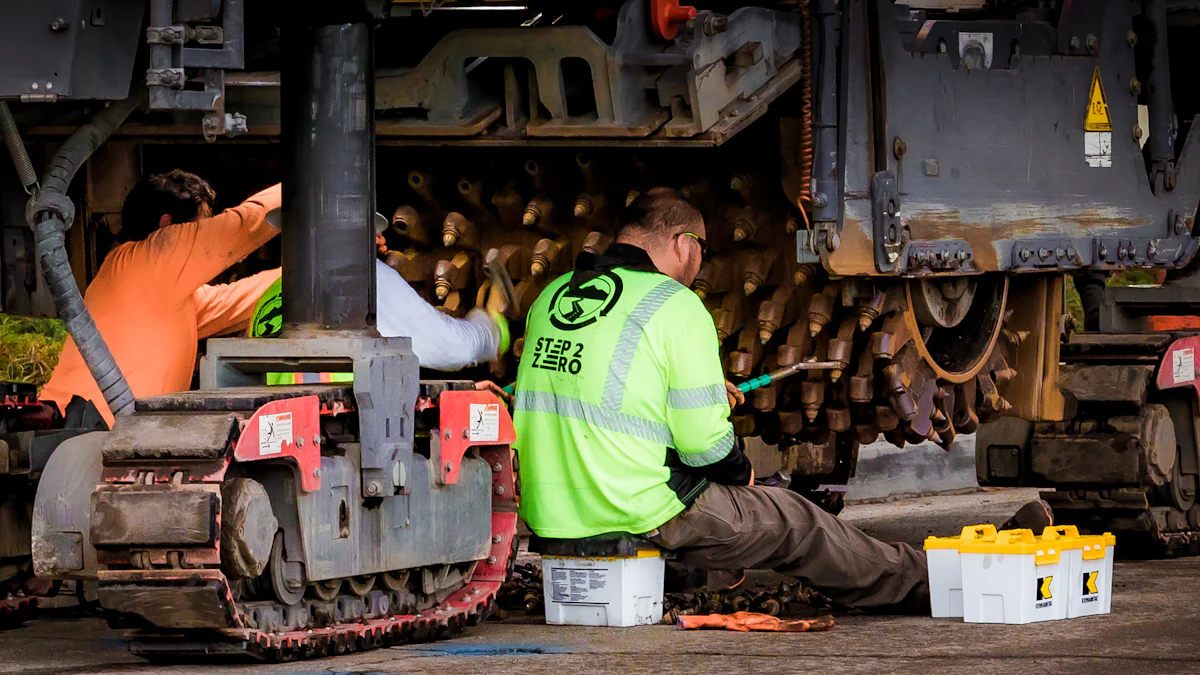
What Are Kubota Mini Excavator Parts Diagrams
A Kubota mini excavator parts diagram is like a roadmap for your machine. It visually breaks down the excavator into its individual components, making it easier for you to identify and locate specific parts. These diagrams are essential when you’re performing maintenance or ordering replacements. They help you avoid confusion and ensure you’re working with the correct parts.
Typically, these diagrams include key components such as the engine, hydraulic system, and operator’s platform. To give you a clearer picture, here’s a table of the main sections you’ll find in a Kubota mini excavator parts diagram:
Key Component |
|---|
BASIC ENGINE |
AIR INTAKE SYSTEM |
EXHAUST SYSTEM |
FUEL SYSTEM |
COOLING SYSTEM |
ELECTRICAL SYSTEM |
HYDRAULIC SYSTEM |
FRONT ATTACHMENTS |
TRUCK FRAME |
SWIVEL FRAME |
OPERATOR’S PLATFORM |
ACCESSORIES |
By understanding these sections, you’ll know exactly where to look when troubleshooting or replacing parts.
Common Symbols and Notations in Diagrams
Kubota mini excavator parts diagrams use symbols and notations to convey important details about each part. These symbols might seem confusing at first, but once you understand them, they make the diagrams much easier to use.
Here’s a quick guide to some of the most common symbols and their meanings:
Symbol | Meaning |
|---|---|
REF.No | The number referring to the part on the picture page of the parts book. |
Part No. | The number assigned to this part at the time of printing the parts book. |
Description | Description of part. |
Q’ty | Quantity of part used on that page. |
S.No. | Serial number range of the equipment that this part will fit. |
>= | Your serial number should be greater than or equal to the number shown. |
<= | Your serial number should be lesser than or equal to the serial number shown. |
I/C | Interchangeability of part shown. |
ß | The part shown will work for the older and later serial number. |
# | The part shown is not interchangeable with the other serial number. |
Remarks | Notes about this particular part. Sometimes this may say except [FR] or [CA]. |
When you’re reading a diagram, these symbols help you understand part compatibility, quantity, and other critical details.
How to Navigate the Layout of a Diagram
Navigating a Kubota mini excavator parts diagram might feel tricky at first, but it’s simpler than you think. Start by locating the index or legend, usually found at the beginning or end of the diagram. This section explains the symbols and provides a list of parts.
Next, identify the section of the excavator you’re working on. For example, if you’re replacing a hydraulic seal, go to the hydraulic system section. Match the part number from the diagram to the physical part on your machine. Double-check the serial numbers to ensure compatibility.
By following these steps, you’ll save time and avoid mistakes. With practice, you’ll navigate these diagrams like a pro.
Step-by-Step Guide to Using Kubota Mini Excavator Parts Diagrams

Preparing to Use the Diagram
Gather Tools and Information
Before diving into the diagram, make sure you have everything you need. Grab a flashlight to illuminate hard-to-see areas and a magnifying glass for reading small labels. Keep a notepad and pen handy to jot down part numbers or notes. Familiarize yourself with the layout of the kubota mini excavator parts diagram. Take a moment to note the labels for each section of your excavator. This preparation will save you time and frustration later.
Locate the Correct Diagram for Your Model
Not all diagrams are the same. Each Kubota mini excavator model has its own unique parts diagram. Check your machine’s model number, usually found on the operator’s platform or near the engine. Once you have the model number, locate the corresponding diagram in your manual or online. Using the wrong diagram can lead to confusion and mistakes, so double-check this step.
Identifying Specific Parts
Use the Index or Legend
The index or legend is your best friend when working with a kubota mini excavator parts diagram. It lists all the parts and their corresponding reference numbers. Start by finding the part you need in the index. Then, match it to the diagram to see its exact location and details. This step ensures you’re looking at the right component.
Match the Diagram to the Physical Machine
Once you’ve identified the part on the diagram, locate it on your excavator. Use the diagram as a guide to pinpoint the part’s position. Check for any visible labels or markings on the machine to confirm you’ve found the correct component. This process helps you avoid ordering the wrong part or making unnecessary replacements.
Ordering or Replacing Parts with YNF Machinery
Cross-Check Part Numbers
Before placing an order, cross-check the part number from the diagram with the one on your machine. This step is crucial to ensure accuracy. If the numbers don’t match, double-check the diagram and your machine’s serial number.
Verify Compatibility with YNF Machinery’s Products
YNF Machinery makes it easy to find compatible parts. Their products, like hydraulic cylinder seal kits and excavator couplings, are designed to fit a wide range of Kubota mini excavators. Use their website or contact their support team to confirm compatibility. This ensures you get high-quality parts that work seamlessly with your machine.
Overcoming Common Challenges in Using Parts Diagrams
Misinterpreting Symbols or Labels
It’s easy to misread symbols or labels in a parts diagram, especially if you’re new to using them. But don’t worry—this happens to everyone at some point. The most common reasons for confusion include:
Missing labels on lines, which can make it unclear what a part connects to.
Symbols or notations that aren’t styled clearly, leaving you guessing their meaning.
Poor color choices that might not stand out, especially if you’re colorblind.
To avoid these pitfalls, take your time when studying the diagram. Start by reviewing the legend or index to familiarize yourself with the symbols. If something still doesn’t make sense, compare the diagram to your machine. This hands-on approach often clears up any confusion.
Dealing with Outdated or Missing Diagrams
Sometimes, you might find yourself working with an outdated or incomplete diagram. This can feel frustrating, but there are ways to handle it effectively:
Check the manufacturer’s website or resources for updated diagrams. They often provide the latest versions online.
Reach out to an expert or technician if you’re stuck. Their experience can help clarify any uncertainties.
Cross-reference part numbers with your machine’s manual. This ensures you’re looking at the right components.
Compare the diagram to the physical parts on your excavator. This step helps confirm whether the diagram matches your machine.
By following these steps, you’ll save time and avoid unnecessary mistakes.
Troubleshooting When Parts Don’t Match
You’ve ordered a part, but it doesn’t fit your machine. What now? First, don’t panic. This issue is more common than you think. Start by double-checking the part number against your diagram and machine. A small typo or misread number could be the culprit.
If the numbers match but the part still doesn’t fit, consider the possibility of a manufacturing update. Sometimes, newer models use slightly different components. In this case, contacting a trusted supplier like YNF Machinery can help. Their team can guide you to the correct part and ensure compatibility.
By staying patient and methodical, you’ll resolve these challenges and keep your excavator running smoothly.
Tips for Mastering Kubota Mini Excavator Parts Diagrams
Build a Reference Library with YNF Machinery Resources
Having a solid reference library can save you time and effort when working with parts diagrams. It’s like having a toolbox filled with everything you need to tackle any maintenance challenge. Start by gathering reliable resources that provide detailed diagrams and part information for your Kubota mini excavator. Here are some excellent options to include in your library:
Kubota U35-4 – Find Part by Diagram
Keep these resources organized, either digitally or in print, so you can access them quickly. Pair them with YNF Machinery’s product catalogs to ensure you have all the information you need in one place.
Pro Tip: Bookmark these links or save them to a dedicated folder on your computer for easy access during repairs or part replacements.
Familiarize Yourself with Common Parts like Excavator Couplings
Understanding the most frequently used parts in your excavator can make a big difference. Start with components like excavator couplings, which play a crucial role in power transmission. These couplings connect the engine to the hydraulic pump, ensuring smooth operation.
YNF Machinery offers a variety of high-quality couplings, including Centaflex-A and Bowex models. These are designed to handle tough conditions while minimizing vibration and wear. By familiarizing yourself with these parts, you’ll know what to look for when inspecting or replacing them.
Take some time to study their features, such as flexibility and torque capacity. Knowing these details will help you identify issues early and choose the right replacement parts.
Did You Know? Regularly inspecting your excavator couplings can prevent unexpected breakdowns and extend the life of your machine.
Stay Updated with Manufacturer and YNF Machinery Resources
Keeping up with the latest updates from Kubota and YNF Machinery ensures you’re always working with accurate information. Manufacturers often release updated diagrams, manuals, and part specifications. These updates can include new part numbers, compatibility changes, or improved designs.
Visit Kubota’s official website and YNF Machinery’s platform regularly. Both provide valuable resources, including updated diagrams and product details. YNF Machinery also offers expert support to help you find the right parts for your excavator.
Quick Tip: Subscribe to newsletters or follow these brands on social media to stay informed about new releases and updates.
By staying proactive and informed, you’ll master the use of parts diagrams and keep your excavator running like a pro.
Practice Regularly to Improve Efficiency
Practice makes perfect, right? The same goes for using Kubota mini excavator parts diagrams. The more you work with these diagrams, the faster and more confident you’ll become at identifying parts and solving maintenance issues. Here’s how you can make regular practice part of your routine:
Start Small: Begin by focusing on one section of the diagram, like the hydraulic system or engine components. Spend a few minutes each day studying the layout and symbols. This way, you won’t feel overwhelmed, and you’ll gradually build your knowledge.
Set Realistic Goals: Challenge yourself to locate a specific part on the diagram and match it to your excavator. For example, try finding the hydraulic cylinder seals or an engine coupling. Over time, you’ll notice how much quicker you get.
Use Real-Life Scenarios: The next time you perform maintenance, keep the diagram handy. Use it to identify parts, check compatibility, or troubleshoot issues. This hands-on approach reinforces what you’ve learned and helps you apply it in real situations.
Pro Tip: Keep a notebook to track your progress. Write down the parts you’ve identified and any challenges you faced. Reviewing your notes later can help you spot patterns and improve even more.
Practicing regularly doesn’t have to feel like a chore. Think of it as a way to sharpen your skills and save time in the long run. Plus, when you’re confident with diagrams, you’ll avoid costly mistakes and keep your excavator running smoothly. So, grab your diagram and start practicing today—you’ve got this!
Remember: YNF Machinery is always here to support you with high-quality parts and expert advice. If you ever get stuck, don’t hesitate to reach out!
Using a kubota mini excavator parts diagram doesn’t have to be complicated. By following the steps in this guide, you’ll quickly identify parts, avoid mistakes, and keep your machine in top shape. Applying these tips can make a big difference in your maintenance routine. Here’s how:
Benefit | Explanation |
|---|---|
Lower risk of breakdowns | Preventive maintenance addresses potential issues before they lead to equipment failure. |
Increase efficiency | Routine maintenance enhances equipment efficiency, impacting availability, performance, and quality. |
Decrease unplanned downtime | Scheduling maintenance in advance minimizes disruptions and reduces overall downtime. |
When you’re ready to replace parts, YNF Machinery has your back. Their high-quality products, like Excavator Engine Parts and Hydraulic Cylinder Seal Kits, ensure your excavator runs smoothly. With the right tools and resources, you’ll reduce downtime and boost productivity. So, start applying these tips today and see the difference for yourself!
FAQ
How do I find the right parts diagram for my Kubota mini excavator?
Check your excavator’s model number, usually located on the operator’s platform or near the engine. Use this number to search for the correct diagram in your manual or online. YNF Machinery’s support team can also help you locate the right diagram.
What should I do if the part I ordered doesn’t fit?
Double-check the part number against your diagram and machine. If it still doesn’t fit, contact YNF Machinery. Their team can guide you to the correct part and ensure compatibility. Sometimes, newer models require updated components.
Can I use aftermarket parts for my Kubota mini excavator?
Yes, aftermarket parts can be a reliable option. YNF Machinery offers high-quality aftermarket parts that meet or exceed OEM standards. These parts are durable, cost-effective, and compatible with many Kubota mini excavator models.
How often should I inspect my excavator’s hydraulic seals?
Inspect hydraulic seals every 250-500 hours of operation or during routine maintenance. Look for signs of wear, leaks, or damage. Replacing worn seals promptly prevents costly repairs and keeps your excavator running efficiently.
What makes YNF Machinery’s products stand out?
YNF Machinery provides durable, high-quality parts at competitive prices. Their products, like excavator couplings and hydraulic cylinder seal kits, undergo rigorous quality checks. Plus, their expert support ensures you get the right parts for your machine every time.



